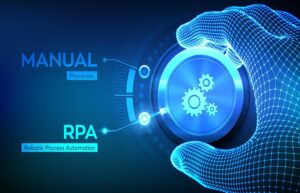The Data Analysis Process: 5 Steps To Better Decision Making

We read about it all over the internet. The term “big data” alone has become something of a popular expression as of late. By exploring the abundance of insights readily available and grasping the intensity of business insight, it’s conceivable to settle on progressively calculated choices that will prompt business development.
Be that as it may, regardless of whether you approach the world’s most prominent data, it’s conceivable to settle on choices that dismiss substantial knowledge, going with your gut. Much of the time, this can demonstrate unfavorable to the business. For most businesses and government organizations, lack of data isn’t an issue. Truth be told, it’s the inverse: there’s regularly an excessive amount of data available. With such a great amount of data to figure out, you need something more from your data:
- You have to realize it is the correct data for responding to your problem;
- You have to reach precise decisions from that data; and
- You need data that supports your decision making
To put it plainly, you need better data analysis. With the correct data analysis procedure and tools, what was before a mind-boggling volume of unique data turns into a straightforward, clear decision making opportunity.
To improve your data analysis abilities and disentangle your choices, implement these five stages in your data analysis process:
How to Become More Data-Driven in 5 Steps?
Considering this, how about we become more data-driven, ready?
Stage 1: Strategy
Data-driven decision making begins with a full-proof and properly optimized strategy. This helps concentrate by removing all the data that is not useful for your business.
In the first place, identify your objectives — what would data be able to accomplish for you? Maybe you’re searching for new leads, or you need to realize which procedures are working and which aren’t.
Take a peek at your business objectives and goals, then design a strategy for them — that way you won’t be stunned by all the potential outcomes big data brings to the table.
Stage 2: Identify Key Regions
Data is streaming into your company from everywhere by all means, from the client’s side to the machines used by your workforce. It’s basic to deal with the various sources of data and distinguish which regions will bring the most advantage. Which territory is vital to accomplishing your overall business strategy? This could be either operations or finances, for instance.
Stage 3: Data Targeting
Since you’ve recognized which regions of your business will profit the most from analysis and what issues you need to address, it’s a great opportunity to target which datasets will respond to every one of those consuming inquiries.
This includes taking a gander at the data that you as of now have and discovering which data sources give the most important data. This will help streamline data. Just know that when various divisions use separate frameworks, it can prompt off-base data reporting. Focusing on data as indicated by your business goals will help keep the expenses of data storage down, also guaranteeing that you’re picking up the most valuable bits of knowledge. Watch out for expenses, and keep the team cheerful, by concentrating just on the data you truly need.
Stage 4: Collecting And Examining Data
Identify the key players who will deal with the data. Generally, department heads will fall in this category. All things considered, the most helpful data will be gathered at all levels and will originate from both internal and external sources, so you have a balanced perspective on what’s happening over the business.
To analyze the data adequately, you may require coordinated frameworks to interface all the various data sources. The degree of abilities you need will shift as indicated by what you have to analyze. The more unpredictable the inquiry, the more specific aptitudes you’ll require.
Then again, basic analysis may require expertise in Excel, for instance. Some analysis stages offer availability so everybody can get to data, which can help interface the whole workforce and make for an increasingly joined-up association. The more available the data, the more potential there is for individuals to spot bits of knowledge from it.
Stage 5: Interpret Results
In the wake of analyzing your data and potentially leading further research, it’s at last time to interpret your results. As you interpret your analysis, remember that you can’t ever demonstrate a speculation genuine: rather, you can just neglect to dismiss the theory. Implying that regardless of how much data you gather, chance could generally meddle with your outcomes. As you interpret the results of your data, ask yourself these key questions:
- Does the data answer your problem? How?
- Does the data assist you with guarding against any complaints? How?
- Are there any confinement on your decisions, any points you haven’t thought of?
If your interpretation of the data holds up under these questions and contemplations, at that point you likely have arrived at a profitable resolution. The only thing left to do is to utilize the results of your data analysis procedure to choose your best game-plan.
Why Is Data Analysis So Important?
From private companies to multinationals, the measure of data that organizations produce today is unfathomable, this is the reason the term big data has gotten so mainstream. To discover distinctive data in frameworks, consider what data analysis is and the five stages to better decision making.
The achievement of any business requires individuals who can appropriately analyze the data about the articles they get. The measure of data accessible today is a higher priority than at any other time, so organizations need to enlist experts who had finished with NEIU’s data analysis training.
This is particularly valid if the owners of the organization don’t have a lot of data about it. At that point, it would be a smart thought to acquire a group of specialists first. Data contains so much key data that organizations gather. An expert can enable you to choose what data to concentrate on, give you where you are losing clients, or propose approaches to improve your game.







